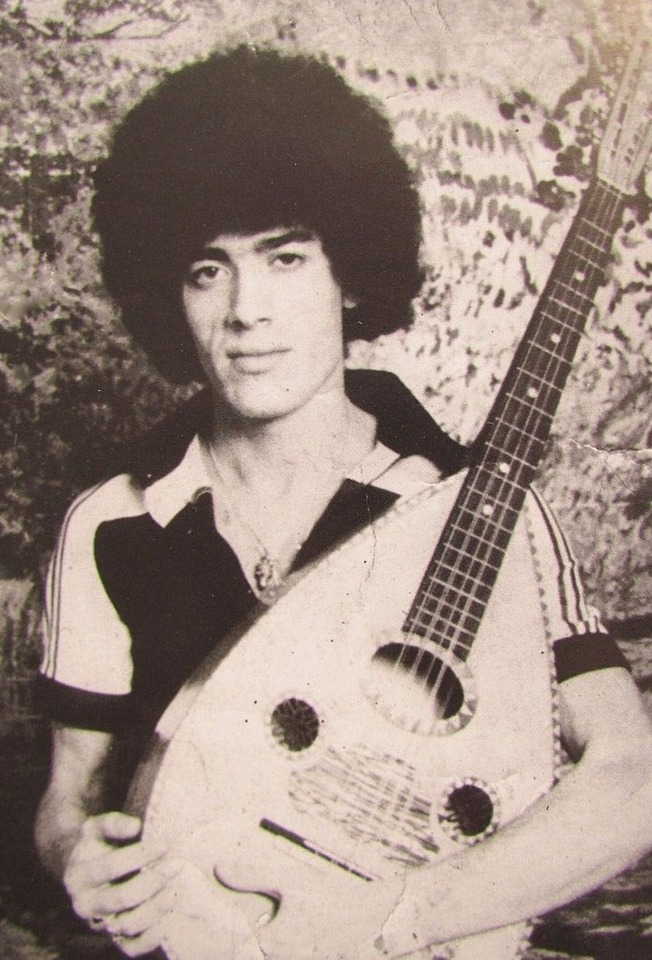The Algerian mandole, also called mandol or mondol, is a stringed instrument that resembles the elongated instrument, mandolin. Among its other names, the mandole is also referred to as mandoluth when played by Hakim Hamadouche, a musician. This steel fretted instrument is widely used in Algeria, specifically in Nuubat (Algerian classical music), Chaabi (traditional music of Algiers), Kabyle music. The name of this stringed instrument, mandole, was often confused with its ancestor instrument called mandola, also known as tenor mandola. However, the mandole is not a mandola but a mandocello-sized instrument. The mandocello is a plucked baritone instrument in the mandolin family. It has eight strings and is larger than a mandolin.
Historically, the mandole is a European mandola that was reborn in Algeria. In 1932, an Italian luthier named Jean Belido created the North African version of the mandola. It was after Belido followed the recommendations of El Hadj M’Hamed El Anka, a Grand Master of Andalusian classical music and a Chaabi musician. At the age of thirteen, El Anka had learned to play the mandola under the guidance of an orchestra leader, Mustapha Nador. After Nador saw El Anka’s passion and innate sense of rhythm, he then recruited him to his own orchestra playing for festivals. In there, El Anka initially played the tambourine before Nador eventually taught him to play the mandola. Since then, it became his favorite instrument.
After Nador died, El Anka took place in managing the orchestra and had begun to participate in the course of playing the mandola. Subsequently, he had gained popularity and had recorded nearly 360 music and 130 records.
In his years in music, he found out that the mandolas used by the orchestra were too high-pitched and not loud enough. Consequently, in 1932, El Anka began to craft a bigger mandola with the help of a luthier. The newly created mandole then became El Anka’s primary instrument.
Moreover, the Algerian mandole has an almond-shaped body and has a flat back. Similar to a guitar, the mandole has a wide neck. However, the mandole has about eight to twelve strings in double courses. It also has an additional fret that is present to produce quarter notes. Some variations include the thickest string to be single strings instead of double courses.
Along with that, the mandole’s sound hole is usually diamond in shape, although it could sometimes be round and covered by a rosette. Meanwhile, when it comes to length, the mandole has about a scale length of 650 millimeters, equivalent to 25.5 inches. This measurement could extend up to 27 inches when measured within the instrument’s nut and saddle. Nevertheless, the Algerian mandole has an overall length of approximately 990 millimeters (39 inches). It has a width of 340 millimeters (13.4 inches) and a depth of 75 millimeters (3 inches).
Much like the mando-cello, the mandole was in the category of baritone or bass range instruments because of its scale length. It can be tuned as a mandocello, an oud (a short neck lute type and pear-shaped instrument), or as a guitar. Tuning the mandole largely depends on how it will be played or in accordance with the performer’s preferences. In adjusting the mandole as a guitar, the strings will be tuned as follows: A2 A2 D3 D3 G3 G3 B3 B3. Meanwhile, the following tunes were dropped for about four or five-course instruments: E2 E2 and E4 E4.Additionally, when the mandole is tuned using the oud, standard tunings would be D2 D2 G2 G2 A2 A2 D3 D3 G3 G3 C4 C4. On the other hand, mandocello uses C2 C2 G2 G2 D3 D3 A3 A3 E4 E4 tuning.
Some notable players of the Algerian mandole include Abderrahmane Abdelli, a composer and songwriter who was famous for mixing the North African music with modern sounds. Aside from Abdelli, Amar Ezzahi is also one of the skilled mandole players in the music industry. Ezzahi was also known as the figurehead of the Algerian Chaabi music. Along with them were notable musicians, including Boudjemaa El Ankis, Cheikh El Hasnaoui, and Dahmane El Harrachi.

